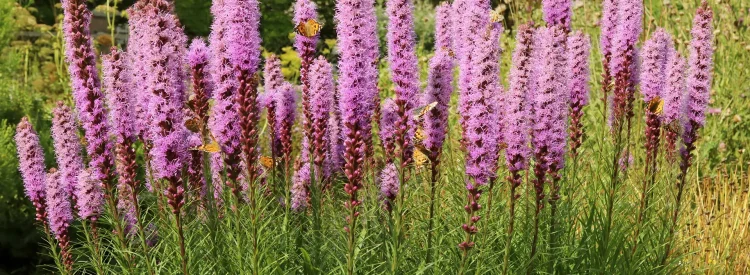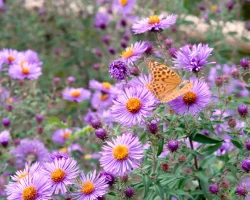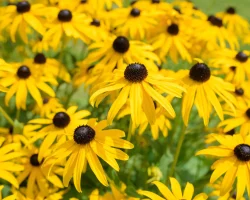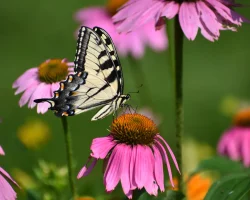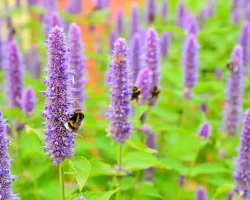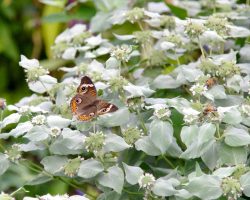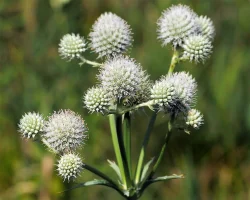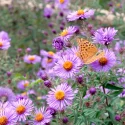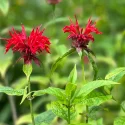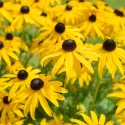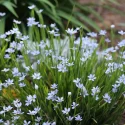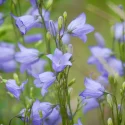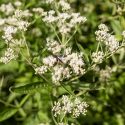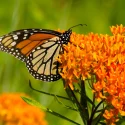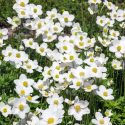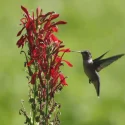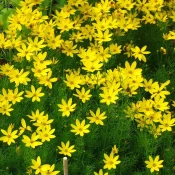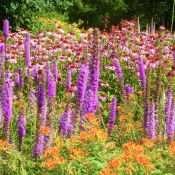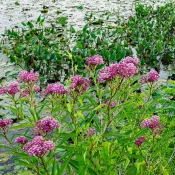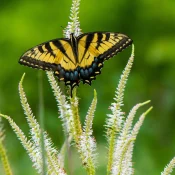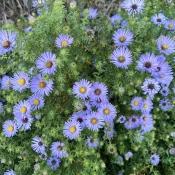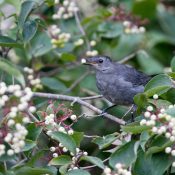Each blazing star sends up a tall stalk in summer and covers it with dozens of tiny purple flowers that open from the top down. The effect is like a living firework display, buzzing with butterflies and bees. Leave the stalks standing through fall and winter, and they transform into natural bird feeders. Plant once, and these drought-tolerant perennials will return for years, adding height and drama to any sunny garden.
Is blazing star a good choice for my yard?
Yes, if…
- You want tall, showy flowers that attract pollinators by the dozens.
- You have a sunny, well-drained spot (they thrive on tough sites).
- You like plants that need little care once established.
- You want to provide natural birdseed through the winter.
- You’re looking for a deer-proof native.
Why blazing star matters
- Pollinator magnet: Dense spikes give bees and butterflies room to feed side by side.
- Drought-tolerant: Stores water in deep roots called corms, making it tough through dry spells.
- Perennial beauty: Plant once and enjoy blooms for years.
- Bird support: Seedheads left standing in fall become natural feeders.
New to native?
Before lawns and landscaping, native plants were here. They’ve fed birds, bees, and butterflies for thousands of years—and they’ll do the same in your yard. The best part? They’re easier to grow than you think.
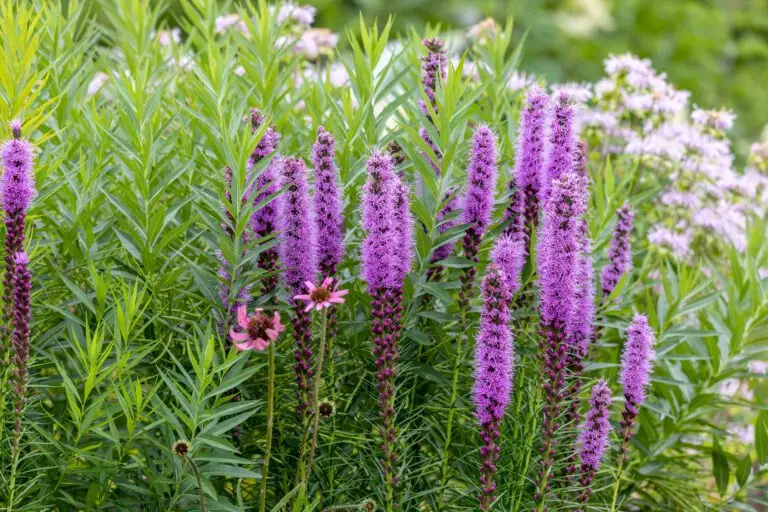
Blazing stars flower from the top down
Unlike hundreds of other flowering plants, blazing stars flowers from the top to the bottom. The plant will send up a tall stalk first, then buds will form along 3/4 of the stalk, and then slowly, the flowers will bloom from the top down.
Types of native blazing star
There are about 40 species of Liatris (blazing star) native to North America. Here are a few you’re most likely to find at nurseries:
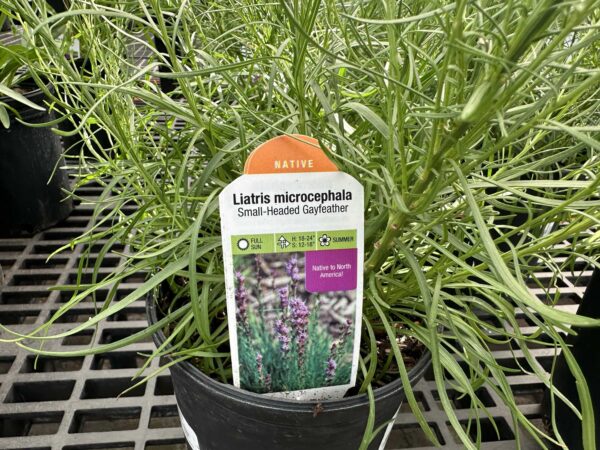
Appalachian Blazing Star
Liatris microcephala
- Short, growing between 8-24 inches
- Delicate leaves and flowers
- Native to the Appalachian mountain region
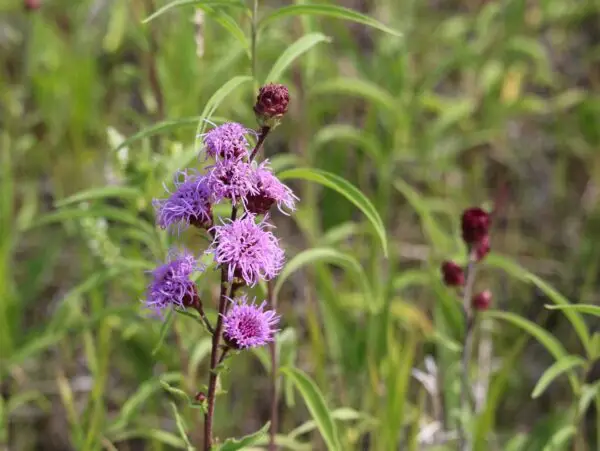
Cylindrical Blazing Star
Liatris cylindracea
- Short, only 8-24 inches!
- Button-like flowers
- Native to the Midwestern US
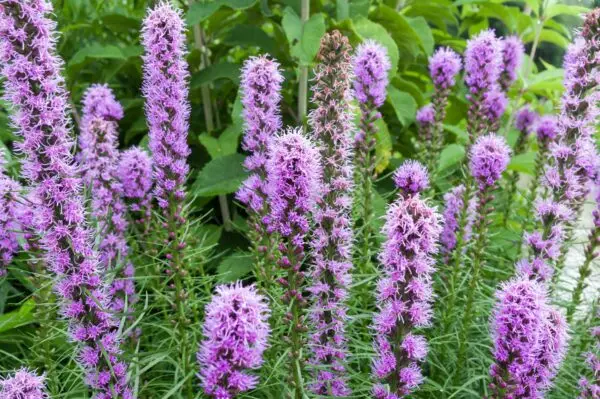
Dense Blazing Star
Liatris spicata
- Tall: 2-5 feet
- Tightly packed flowers
- Native to the entire eastern half of the country
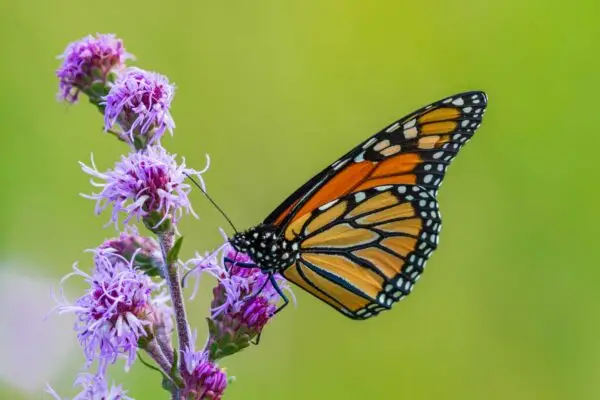
Rocky Mountain Blazing Star
Liatris ligulistylis
- Rocky Mountain and Rough Blazing Stars (below) look very similar, with one notable difference: Rocky Mountain prefers wetter soils, while Rough prefers drier sites.
- Pom-pom-like flowers
- Native to… (no surprise) the western and Midwestern United States
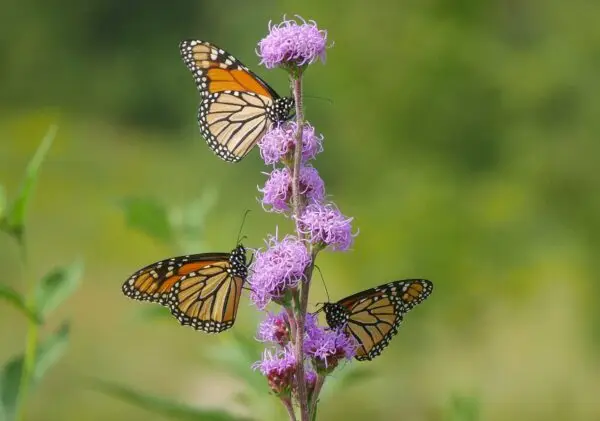
Rough Blazing Star
Liatris aspera
- Tall: 2-5 feet!
- Prefers well drained areas
- Native to the Midwestern US
Looking for the other 30+ species?
Wikipedia lists dozens more blazing stars within the Liatris family. A note: most other species can be challenging to find at native plant nurseries or online sources.
How to grow blazing star
Blazing star is easy to grow and keep alive year after year. Blazing stars are:
- Low maintenance: no fertilizer or special needs are required for blazing stars to thrive
- Drought-tolerant: Blazing stars can withstand dry, hot periods after their first year getting established
- Longtime bloomers: their flowers are often open from June to August!
- Perennials: they will come back year after year. Once you plant them and they are happily established, you can enjoy them in your yard for years.
Grow blazing star from seeds
Growing blazing star from seeds is cheaper but takes some patience: plants from seed will usually not flower until the second or third year. Here are some online nurseries that sell blazing star seeds:
- Everwilde Nursery sells many species of blazing star (seed packets start at $3.75)
- Hudson River Seed Company sells Dense Blazing Star seeds in beautiful seed packets ($4.49 for 200 seeds)
Grow blazing star from plants
Blazing star plants will normally flower the first year they are planted and will return in the following years with stronger plants and bigger blooms.
A corm is blazing star’s built-in water bottle
Instead of a network of thin, fibrous roots, blazing star grows from a corm—a swollen underground stem that stores water and nutrients. Think of it as the plant’s built-in water tank.
Corms let blazing star shrug off droughts and come back strong year after year. Many species evolved on open prairies, where storing water underground was the secret to survival.
Where blazing star shines in your yard
Use blazing star as a vertical accent in sunny beds or meadows. Its narrow form makes it perfect behind shorter plants like black-eyed Susans or bee balm. Mass them together for a fireworks effect in July, or mix them with grasses and coneflowers for a prairie-inspired planting that keeps pollinators busy all summer.
Plant blazing star in groups for maximum garden drama
Blazing stars look best when planted in groups of 5 plants or more. Seeing such an ornate, showy display makes everyone look twice. It also helps pollinators and birds find food easily.
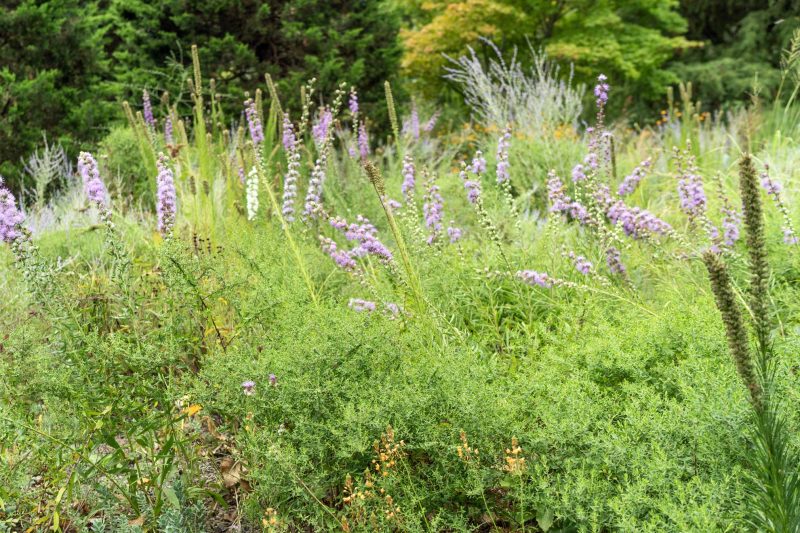
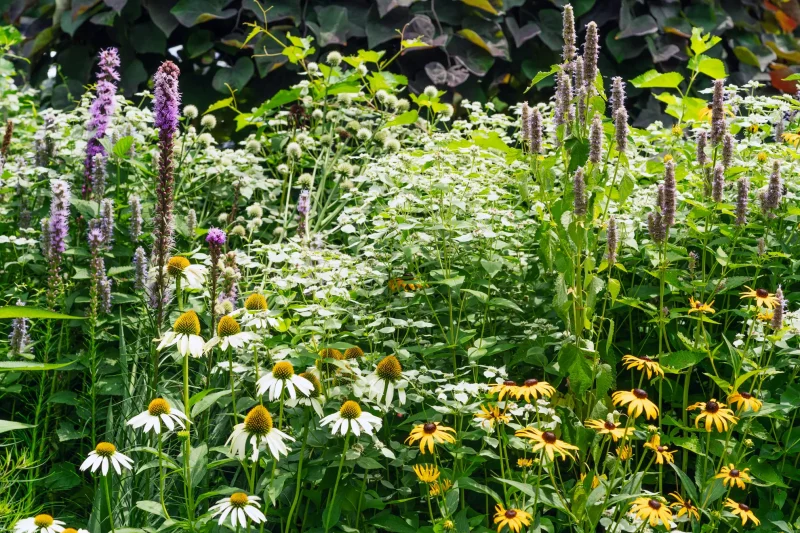
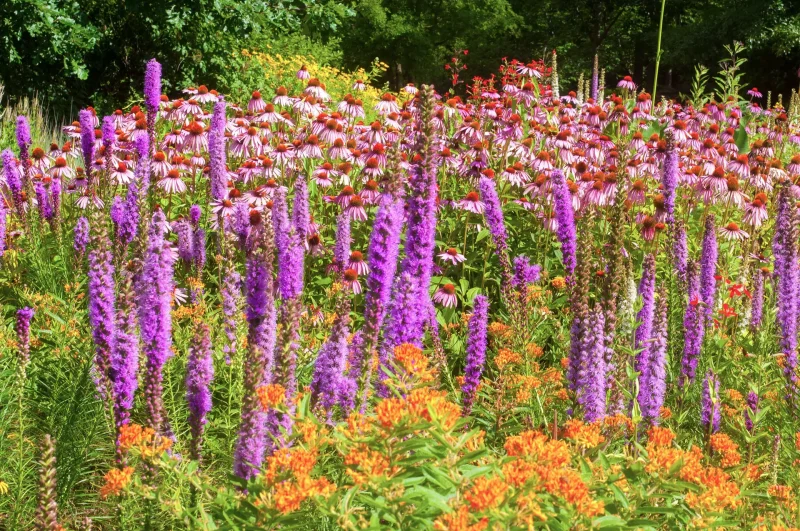
No pesticides or herbicides
Avoid using pesticides or herbicides near blazing star plants, as they can harm the butterflies and pollinators that visit the plant.
More good news:
Blazing Star is deer-proof
Deer do NOT eat Blazing Star. If you’re worried about deer nibbling your garden, planting Blazing Star is good native gardening choice.
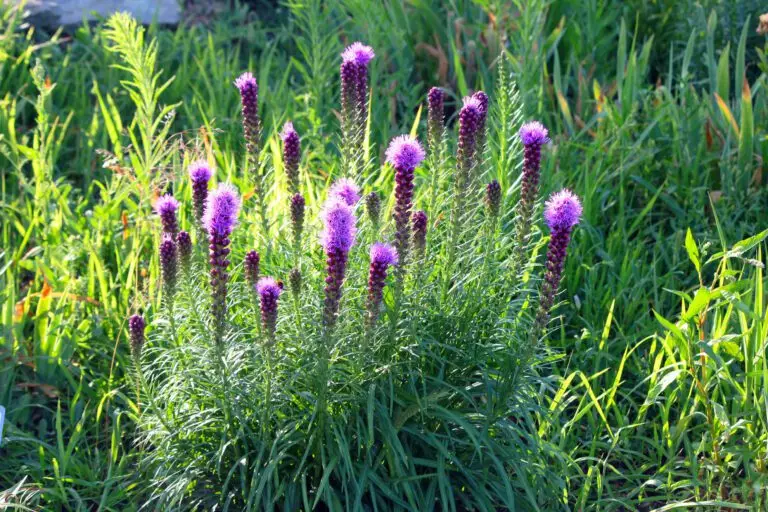
Where can I find seeds and plants?
Finding native plants can be challenging (we partly blame Marie Antoinette.) To make it easier, we’ve assembled four sourcing ideas.
300+ native nurseries make finding one a breeze
Explore 100+ native-friendly eCommerce sites
Every state and province has a native plant society; find yours
Online Communities
Local Facebook groups are a great plant source
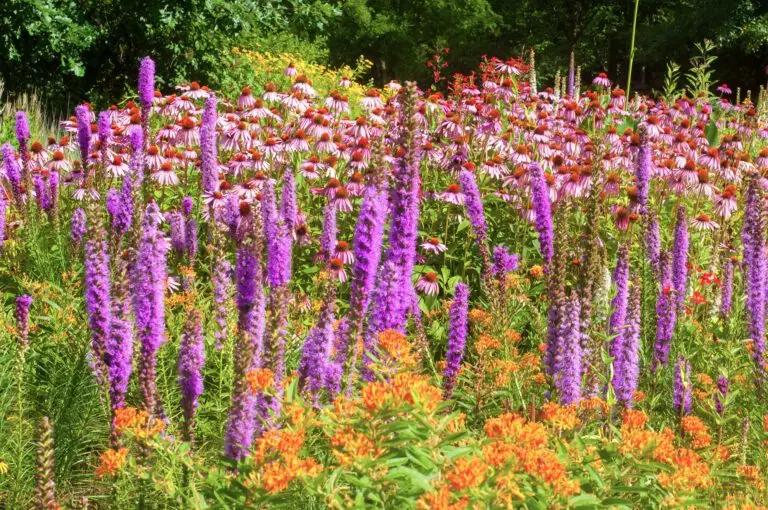
What to plant with blazing star
Remember: most blazing stars are tall. Put medium-height and short-height plants before tall species; otherwise, they will block shorter plants.
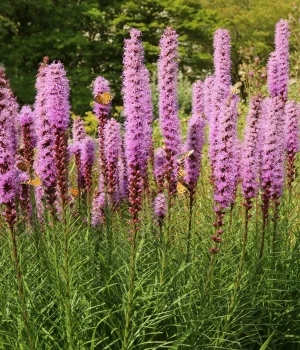
Pairs well with
Growing blazing star in your garden is a sure way to add a pop of color and support local butterflies and songbirds. With its striking flowers and pollinator-attracting qualities, this native plant is a great addition to any garden. Whether you’re looking to plant in a small backyard or a large prairie, blazing star is a hardy and reliable choice that will provide benefits for years. Next up: read our Beginner’s Guide to Native Coneflowers or the Best Native Trees for Front Yards. Happy planting!
Sources
- Britannica, T. Editors of Encyclopaedia. “Liatris.” Encyclopedia Britannica, May 13, 2009. https://www.britannica.com/plant/Liatris.
- Nelson, Gil. Best Native Plants for Southern Gardens: A Handbook for Gardeners, Homeowners, and Professionals, (2010).
- Harstad, Carolyn. Go Native! Gardening with Native Plants and Wildflowers in the Lower Midwest. (1999), 209-210.
- North Carolina State University Extension. “Liatris microcephala.” NC State Extension Plants. https://plants.ces.ncsu.edu/plants/liatris-microcephala/
- New Moon Nursery. “Liatris ligulistylis.” New Moon Nursery. https://www.newmoonnursery.com/plant/Liatris-ligulistylis
Lady Bird Johnson Wildflower Center. “Liatris ligulistylis (Meadow Blazing Star).” Native Plant Database. https://www.wildflower.org/plants/result.php?id_plant=LILI
What if your feed was actually good for your mental health?
Give your algorithm a breath of fresh air and follow us.
